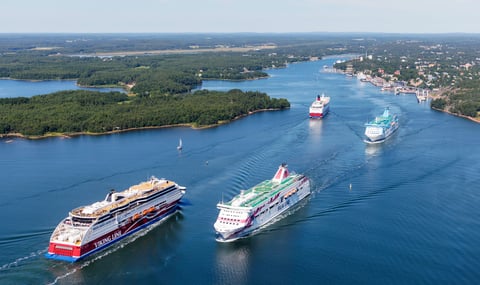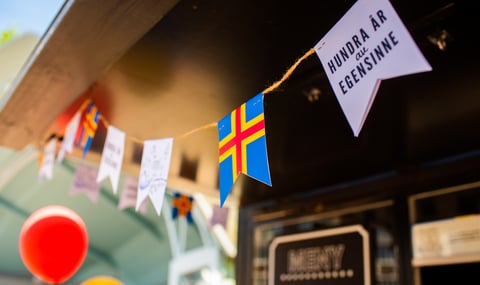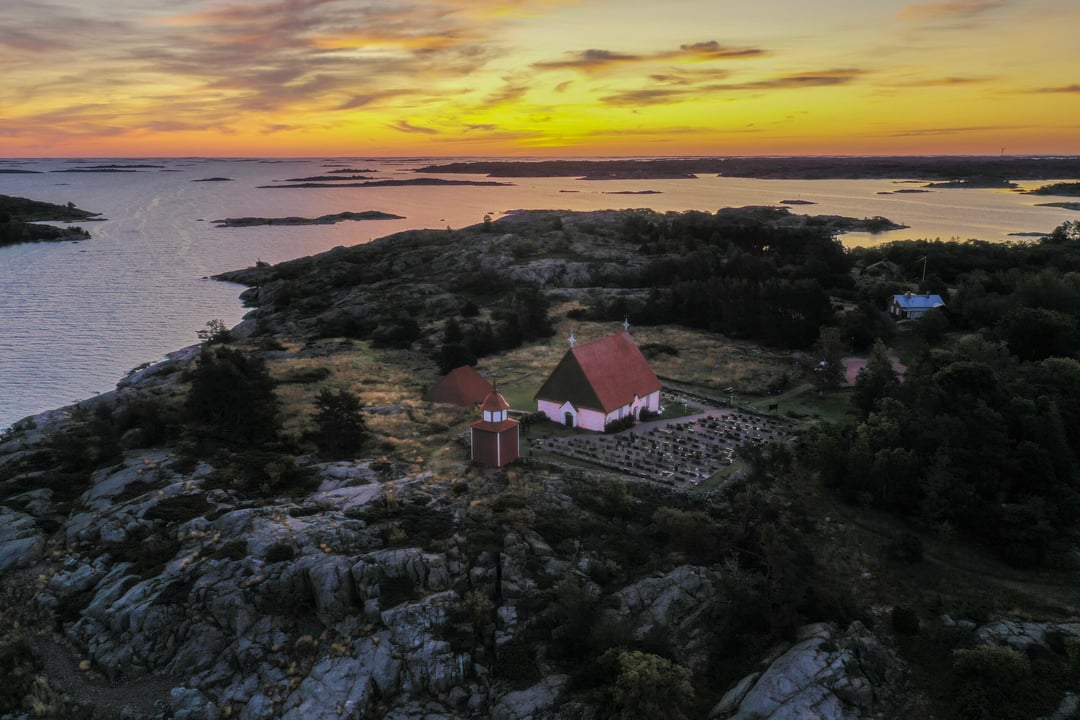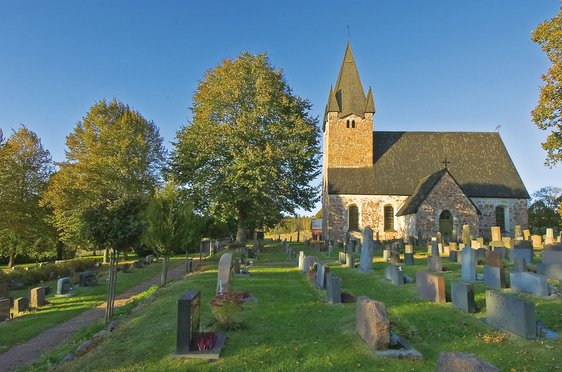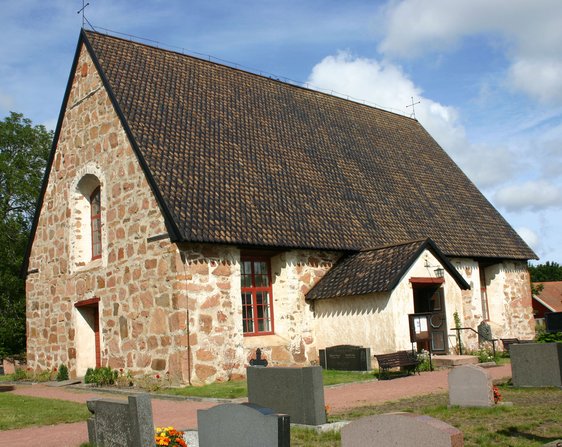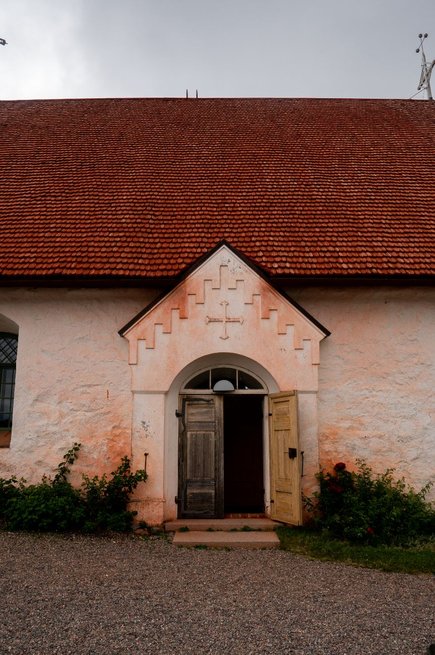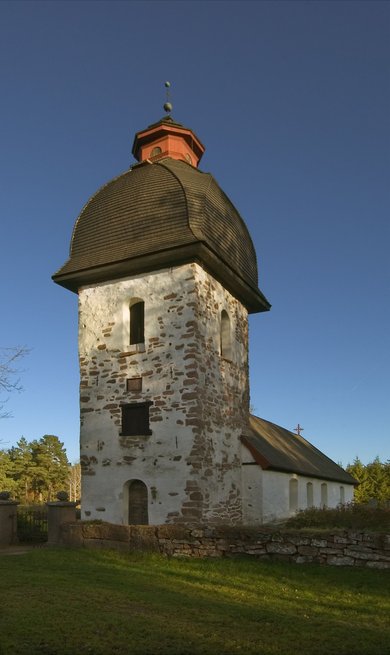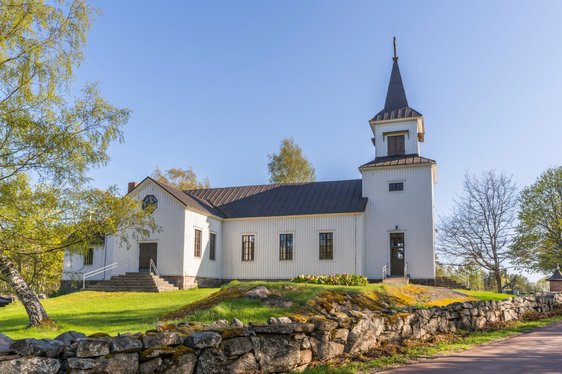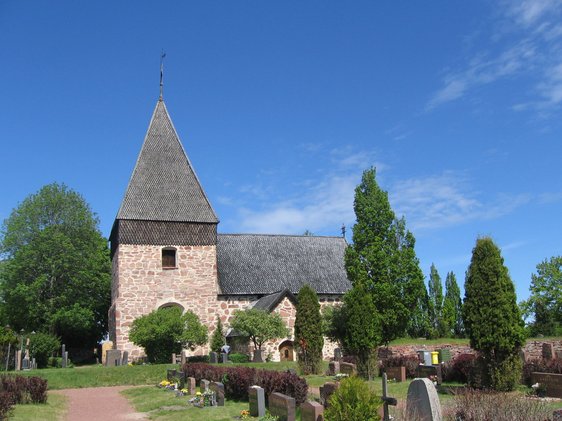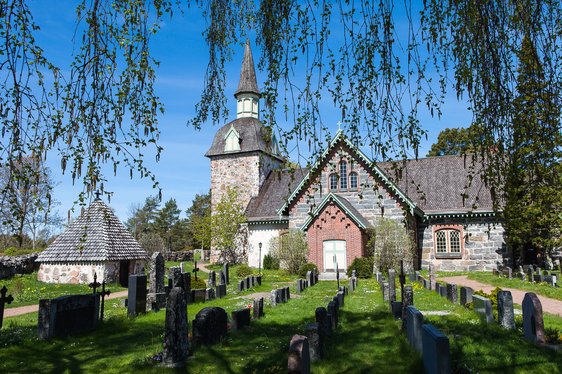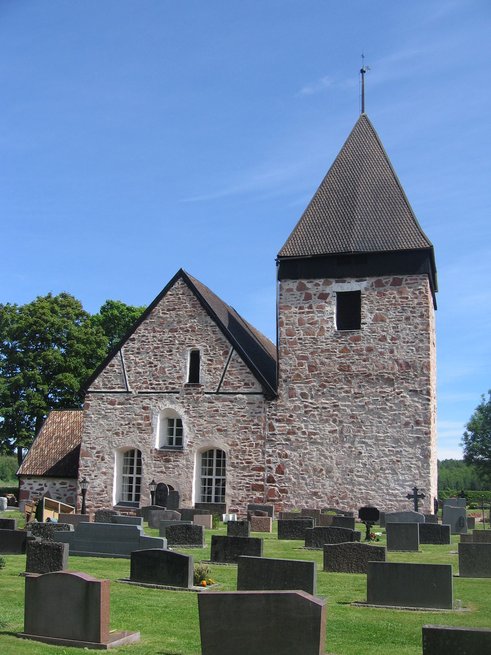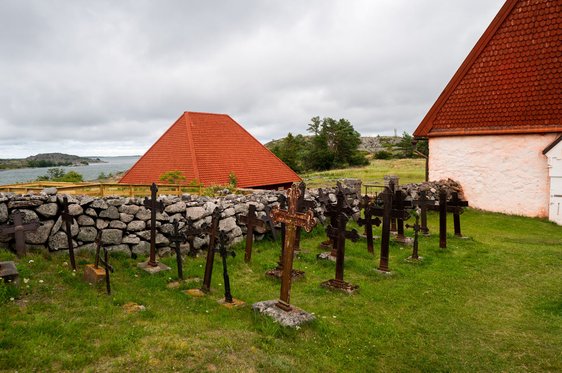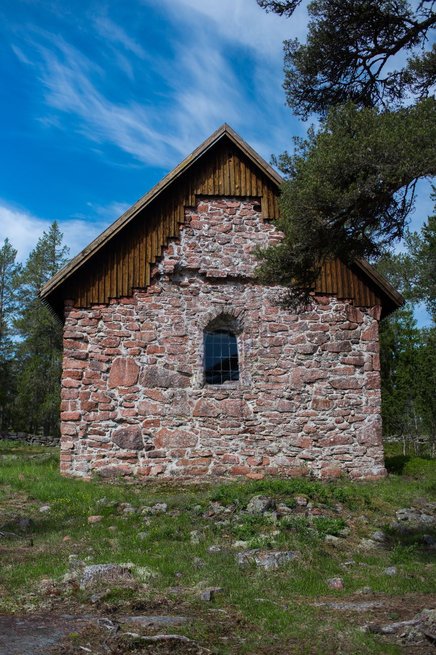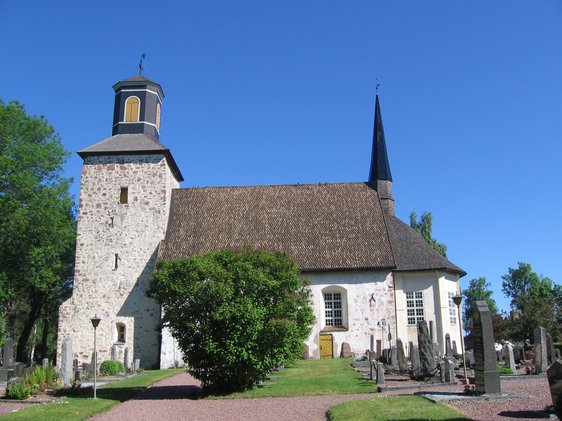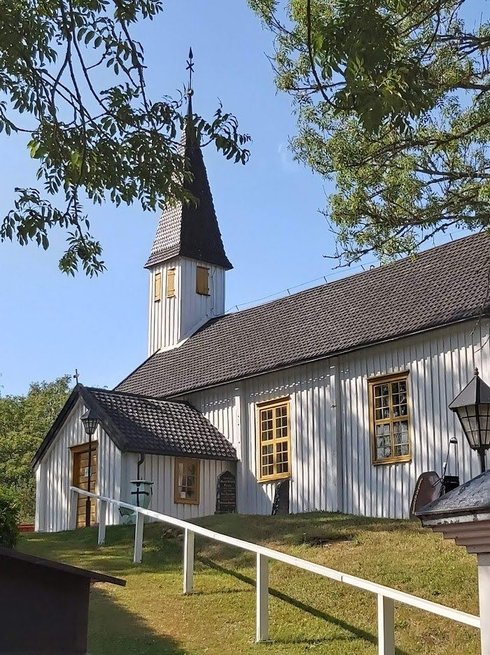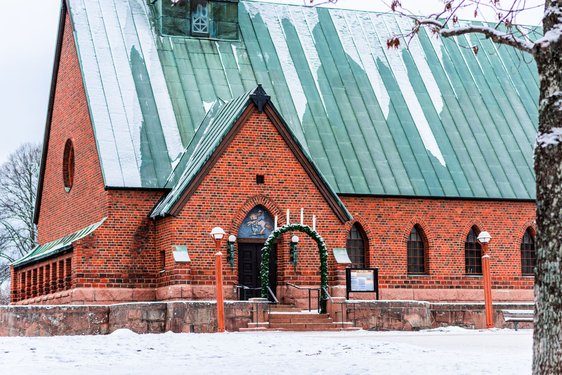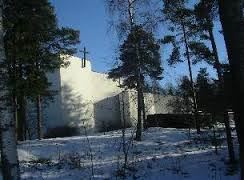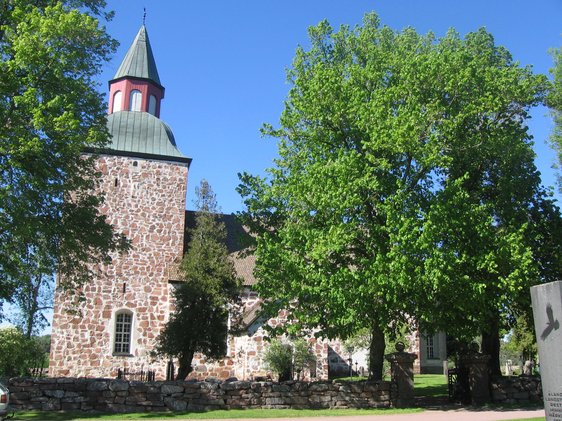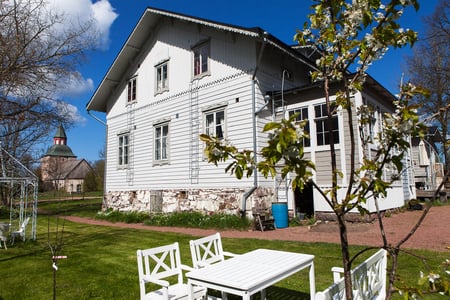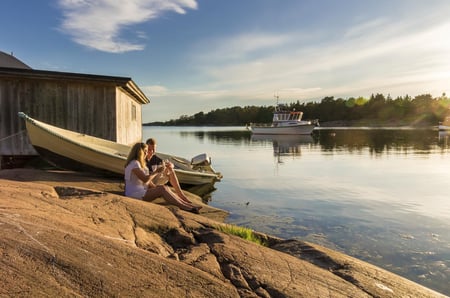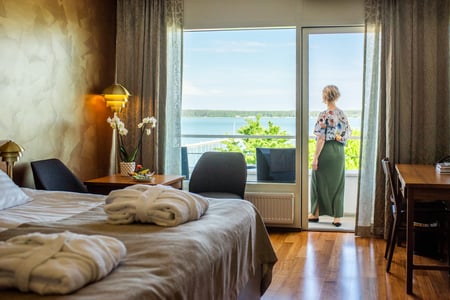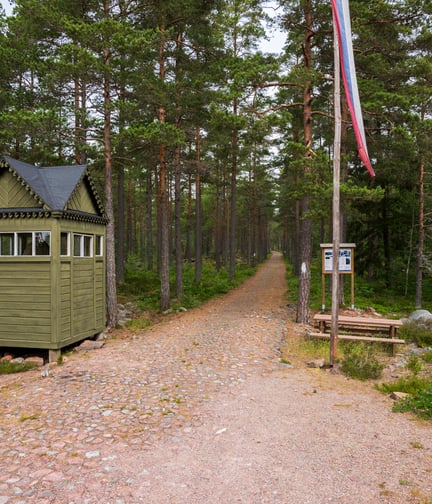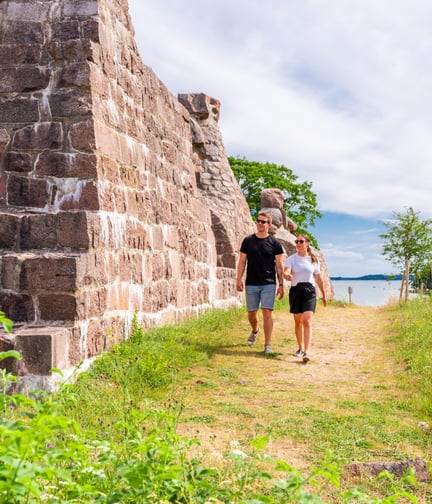Åland churches
If you want to learn the history of the Åland Islands, you should take your time traveling around and visiting the churches. It may be of importance to remind you that they were erected at a time when all of Scandinavia still belonged to the Catholic church, with rich continental networks.
15 churches reflecting the middle ages in the Åland Islands
For centuries the churches have been the center of the parish. This is where the newborn were baptized, where the young were confirmed and couples married. At the end of their lives parishioners were buried in the surrounding churchyard. The thick silent walls, usually built in red granite, have innumerable stories to tell.
Except for the church in Mariehamn, which was built in the 1920s, there are no less than 15 churches, the oldest with a history from the 13th century. Twelve them are stone churches erected in the Middle Ages, while three more recent wooden churches have medieval roots. In addition to that ruins of two stone chapels remain, and several little wooden chapels along the sailing roots. Usually the churches are beautifully placed in the terrain, often close to the largest pre-historical graveyard in the parish and at medieval harbours.
What is special with the Åland churches? Among other things they are unusually thoroughly analyzed and documented scientifically. All medieval stone churches are preserved, and it is rare to find wall-paintings from the 13th century in these northern levels.
Stone churches
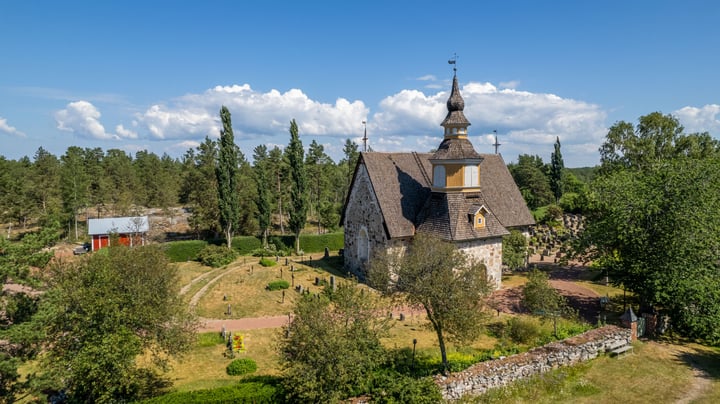
The earliest medieval stone churches belong to the 13th century, while some of them were erected in the 14th and in the 15th centuries. An apparent economic growth at the end of the 13th century made it possible to erect a large amount of stone churches more or less simultaneously. The building activity continued on a smaller scale, uninterrupted, through the entire medieval period.
The chronology of the stone churches is not yet established in detail, but it seems as if the “mother churches” were finished before 1300, while the chapel churches belong to the 15th century. Finström church was also entirely rebuilt in the 15th century.
The churches were erected in easily split Åland red granite (rapakivi). Bricks are only sporadically used towards the end of the Middle Ages. Fieldstones were preferred to bricks for the vaulting of the naves. Local Ordovician limestone was used for the framing of windows and portals.
Wooden churches
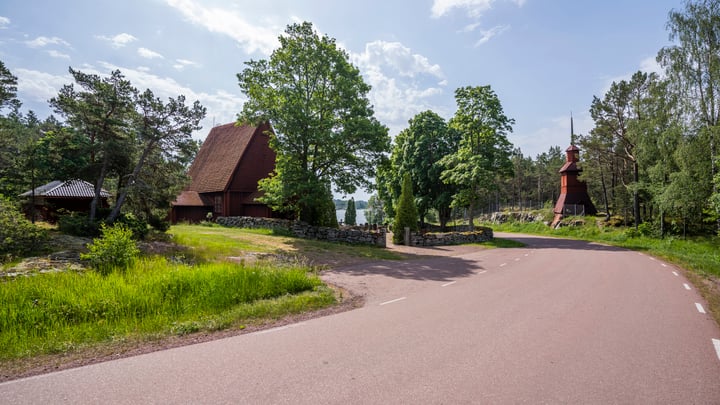
The wooden churches erected in the chapelries of Lumparland, Sottunga and Brändö after the Reformation all had medieval predecessors.
It is also probable that simple wooden churches preceded the Åland stone churches. In some cases remains of these early wooden churches have been documented in archaeological excavations.
Today Lumparland church, painted in white, is the appreciated goal for an excursion with its view over the waters of Kapellviken. Here you can also admire the beautiful gallery from 1760.
Interiors
The artistic decoration of the churches is elaborate. The early Gothic wall paintings in Lemland, Jomala and Sund are considerably older than anything equivalent in the rest of Finland. The same is true of the wooden sculptures in Finström dating from the 12th century. In the church of sund the 5,06 m high crucifix is dendrochronologically dated to the 1250s.
For wall paintings and wooden sculptures the second part of the 15th century marks a time of new flourishing. The church of Kumlinge, for instance, has wall paintings entirely covering vaults and walls
Church ships or socalled “Votive ships” hanging from the ceiling are a usual sight in the Åland churches. In the church of Kökar hangs a real votive ship, implicating a donation from an endangered sailor who promised God a ship in exchange for life. In the porch of Sund you can admire a votive painting from 1671. The painting is the only one of its kind in Åland.
5 churches not to be missed
If your time is limited start with the following churches:
Finström church: The best preserved medieval building in entire Finland, probably from the end of the 13th century. Architecturally interesting, and two sculptures from the 12th century. Probably the main church of medieval Åland.
Sund church: The largest church in Åland, but only slightly larger than the nave of Finström, probably from the middle of the 13th century. The church has a beautiful setting close to the castle of Kastelholm, with royal connections. Fine wall paintings and sculptures from the 13th century.
Lemland church: From the end of the 13th century, with unusually well preserved early gothic wall paintings from the 1290s, describing among other things the Nicholas series. You must also admire the Lemland Madonna from the 1320s, one of the most exquisite Madonnas in entire northern Scandinavia. If possible her enigmatic smile is even more interesting than that of Mona Lisa.
Jomala church differs completely from the other Åland churches. It is probably a private church belonging to an aristocratic family, possibly the oldest stone church of the Islands. It was partly rebuilt in the 19th century, but in the tower arch fine wall paintings from the 1280s are still preserved depicting the Prodigal Son.
Hammarland church: from the 13th century, with its characteristic tower unusually placed on the southern side of the nave. If you arrive from Eckerö by car, this is where you must make a stop. The exterior reflects all the different building stages. In the interior the rare soaring cupola vaults represent an unusual construction in these areas.
Finström church – S:t Mikaels (opens in a new tab)
Finström church comes next to the church at Sund in size. Many question-marks still prevail around this building. It is,…
Geta church – S:t Görans kyrka (opens in a new tab)
Geta church has a separate wooden belfry, rather than the traditional west tower. The stone church was erected in the…
Kökar church – S:ta Anna (opens in a new tab)
Kökar church was erected in 1784 on the ruins of the medieval monastic church, which seems to have been shaped…
Vårdö church – S:t Matthias (opens in a new tab)
Vårdö stone chapel was erected towards the end of the 15th century, as shown by scientific analysis. The chapel is…
Brändös church – St. Jakob (opens in a new tab)
St. Jacob’s Church in Brändö was built in 1893. It is a genuine archipelago church, firmly rooted in the rocky…
Eckerö church – S:t Lars (opens in a new tab)
Eckerö church is flooded in light thanks to unusually high and wide window-openings towards the south and the north. The…
Föglö church – S:ta Maria Magdalena (opens in a new tab)
Föglö church differs in the exterior from most other Åland churches, depending on an almost total rebuilding around 1860. Today…
Hammarland church – S:ta Catharina (opens in a new tab)
Hammarland church is situated by the old postal road, and the largest Iron Age graveyard of the parish. The nave…
Jomala church – S:t Olofs (opens in a new tab)
Jomala church is generally considered to be one of the earliest stone churches in Finland. The age of the west…
Klosterkällaren/Franciskuskapellet (opens in a new tab)
Kökar är en ögrupp söder om Åland, långt ute i havet. I dag ligger den avsides, men på medeltiden sjöd…
Lemböte Chapel ruins (opens in a new tab)
The chapel of Lemböte Chapel was built in the Middle Ages to give shelter and a welcome stop along the…
Lemland church – S:ta Birgitta (opens in a new tab)
In archaeological excavations of the church a predecessor in wood was discovered. Whole covering wall paintings of the highest quality…
Lumparland church – S:t Andreas (opens in a new tab)
Today Lumparland church, painted in white, is the appreciated goal for an excursion with its view over the waters of…
Mariehamn church – S:t Göran (opens in a new tab)
Saint George in Mariehamn is the most recent church in the Åland Islands. The brick church was designed by Lars…
S:t Mårtens kyrka (opens in a new tab)
S:t Mårtens kyrka är belägen i Hindersböle, tre kilometer norrut från stadens centrum. Den har ritats av arkitekterna Stig och…
Saltvik church – S:ta Maria kyrka (opens in a new tab)
Saltvik church in Kvarnbo gives a confusing impression with traces of many alterations. Viking age settlement has been documented around…
